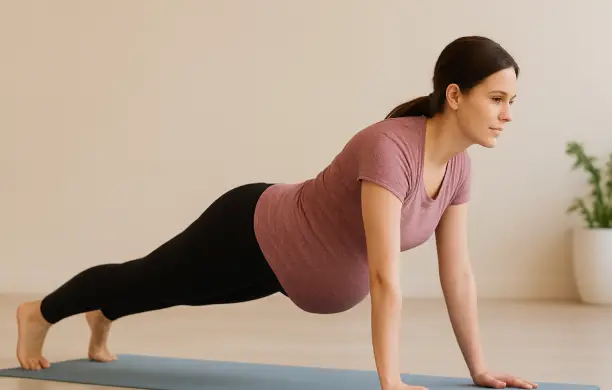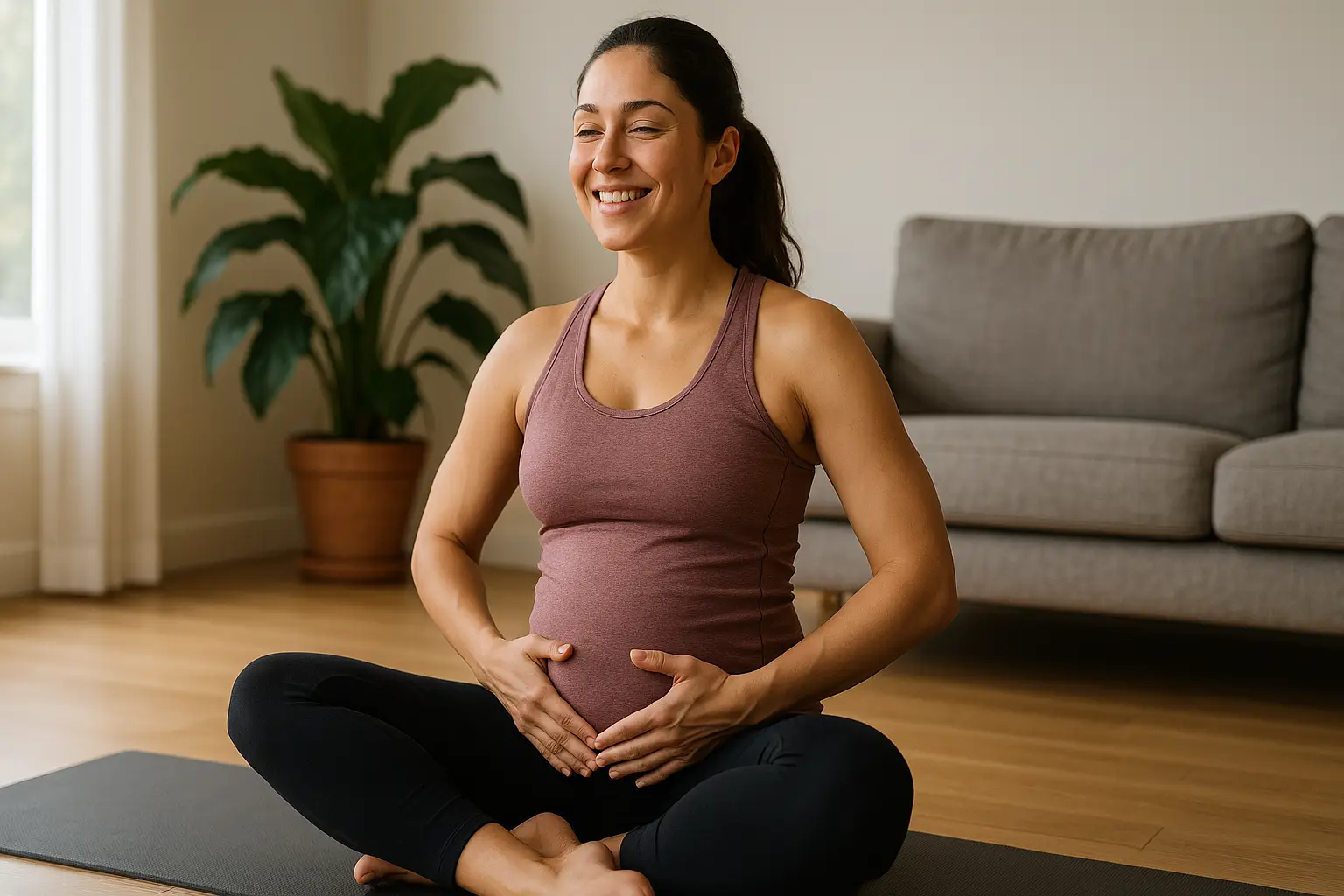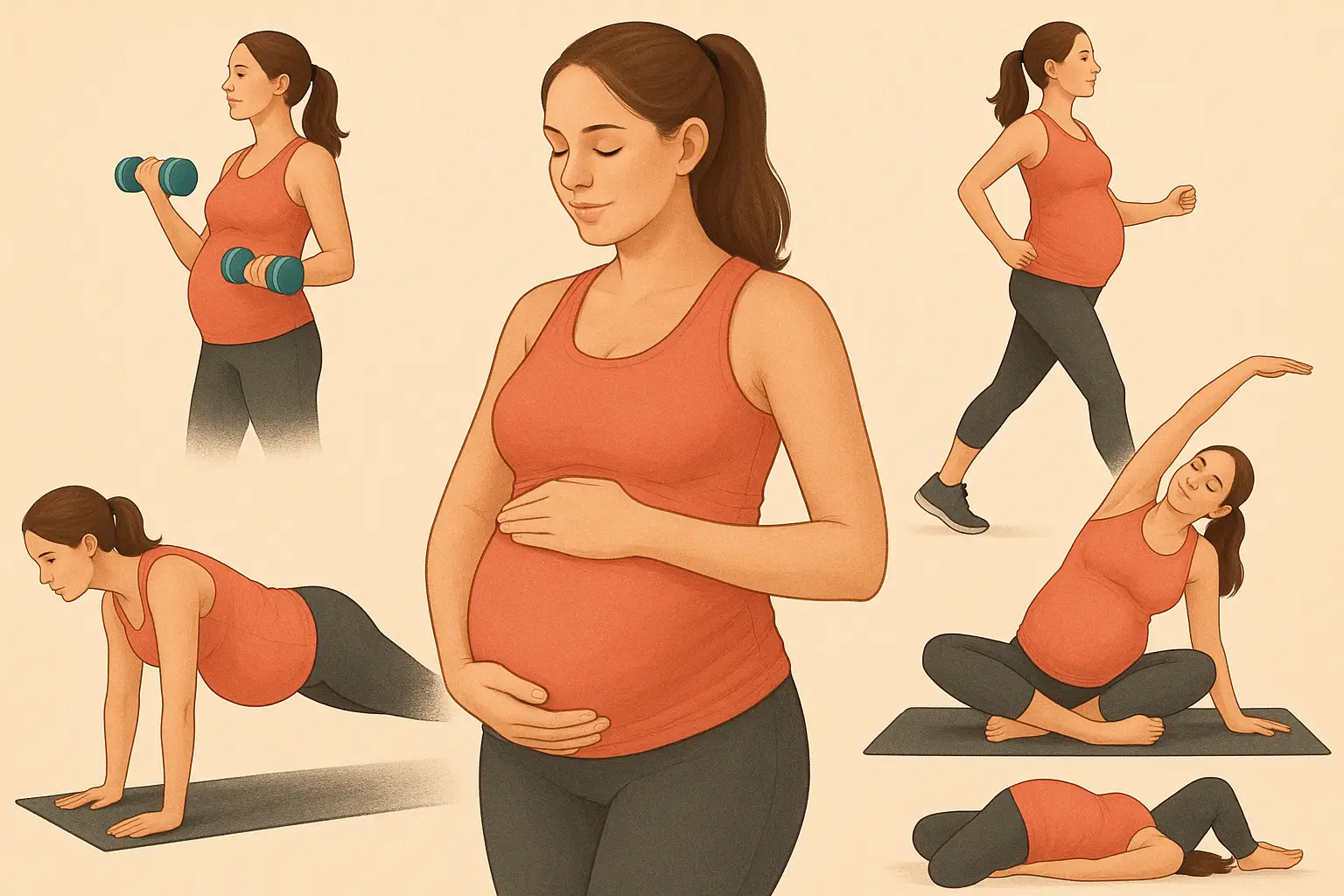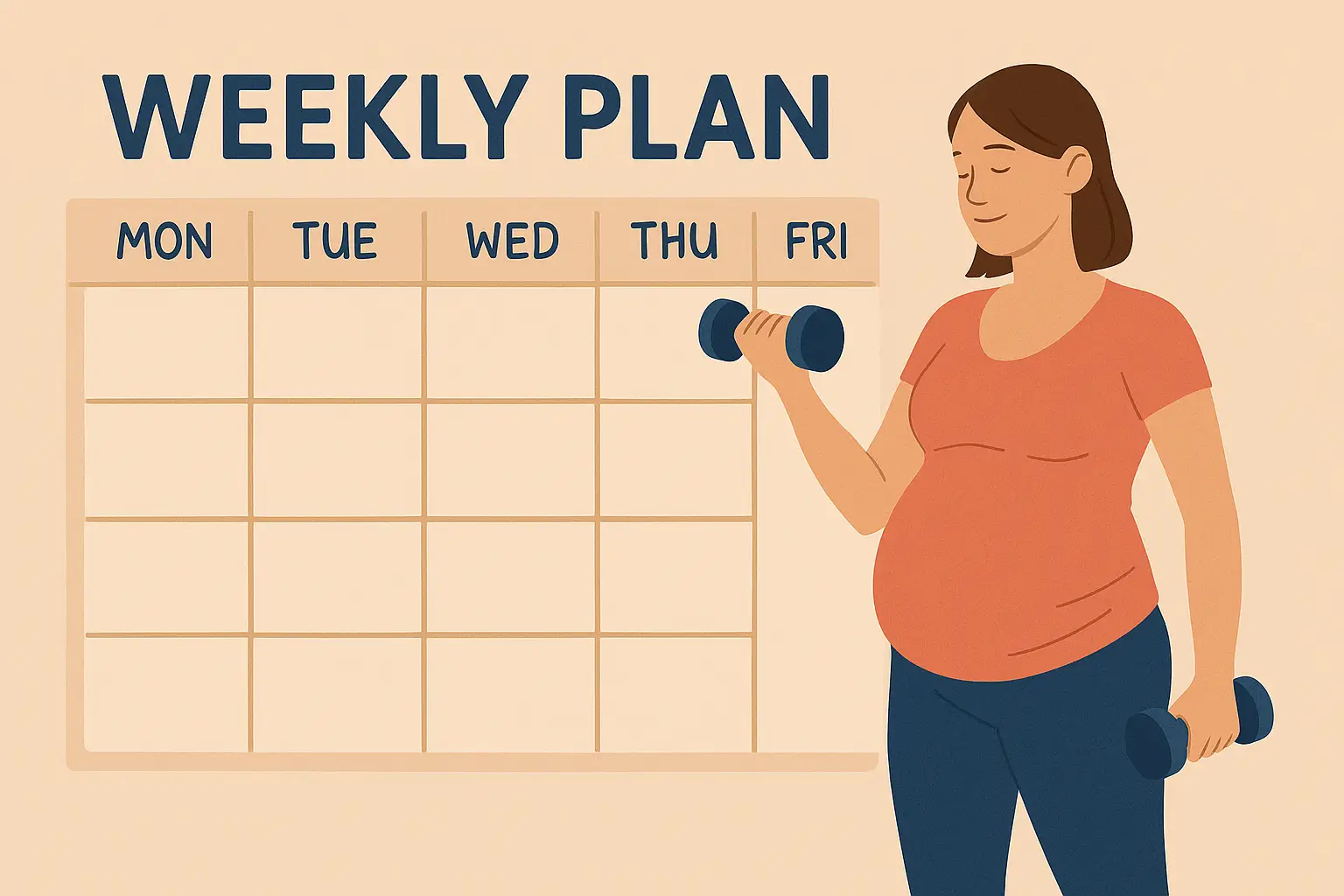Pre-Pregnancy Workout Tips for New Moms
Published On : 3rd Oct 2025

Motherhood is a life-changing journey, and preparing for it starts even before conception. Pre-pregnancy fitness plays a crucial role in ensuring that your body is strong, flexible, and healthy enough to handle the physical and hormonal changes that come with pregnancy. Many new moms-to-be focus only on post-pregnancy recovery, but getting your body ready beforehand can make the journey much smoother and enjoyable.
In this guide, we’ll dive deep into pre-pregnancy workout tips for new moms, explaining the importance of fitness before conceiving, the best exercises to include, and safety measures to follow for a healthier pregnancy.
Why Pre-Pregnancy Fitness is Important

- Boosts Fertility and Hormonal Health: Regular exercise improves blood circulation, helps maintain a healthy body mass index (BMI), and balances hormones—all of which can increase your chances of conceiving naturally.
- Strengthens the Body for Pregnancy: Pregnancy puts stress on your back, hips, and pelvic region. Strengthening these areas beforehand reduces discomfort, supports your growing baby, and lowers the risk of complications.
- Improves Mental Well-being: Pre-pregnancy workouts are not just about the body—they also relieve stress and anxiety. Exercise helps release endorphins, boosting your mood and preparing you mentally for the exciting
- Prepares for Labor and Recovery: Building stamina and core strength before pregnancy helps your body handle labor better and speeds up postpartum recovery.
Pre-Pregnancy Workout Tips for New Moms

- Focus on Core Strength : Your abdominal and pelvic muscles play a huge role during pregnancy and childbirth. A strong core provides stability, reduces back pain, and supports your uterus as it grows.
- Recommended Exercises: Planks, pelvic tilts, bridges, bird-dog pose.
- Avoid: Heavy crunches or sit-ups that strain the abdomen.
- Incorporate Strength Training : Strength training helps build lean muscle mass, boosts metabolism, and supports hormonal balance. It also strengthens joints and ligaments, preparing them for added pregnancy weight.
- Try: Bodyweight squats, lunges, glute bridges, resistance band workouts.
- Tips: Stick to light-to-moderate weights; focus on proper form.
- Add Cardiovascular Exercises : Cardio workouts improve heart health, endurance, and circulation, all of which are beneficial before and during pregnancy.
- Best Options: Brisk walking, swimming, cycling, light jogging.
- Frequency: At least 30 minutes, 4–5 days per week.
- Note: Avoid overexertion—your goal is stamina, not exhaustion.
- Practice Yoga & Stretching : Yoga is one of the best pre-pregnancy exercises as it enhances flexibility, relieves stress, and promotes relaxation. It also helps with better breathing, which is useful during labor.
- Poses to Try: Cat-Cow, Butterfly Stretch, Child’s Pose, Downward Dog.
- Bonus: Include meditation and breathing exercises for emotional balance.
- Strengthen Pelvic Floor Muscles : Your pelvic floor supports the uterus, bladder, and intestines. Weak pelvic muscles can lead to incontinence and complications after childbirth.
- Exercise: Kegels—contract your pelvic muscles for 5–10 seconds, then release. Repeat 10–15 times daily.
- Balance Exercise with Rest : While consistency is key, overtraining can affect fertility and disrupt your menstrual cycle. Aim for moderate activity and give your body enough time to recover.
Pre-Pregnancy Workout Weekly Plan for New Moms
Having a structured workout routine before pregnancy helps your body stay consistent, balanced, and prepared for the journey ahead. Below is a safe and effective weekly workout schedule for women planning to conceive. You can adjust intensity depending on your fitness level.

Weekly Pre-Pregnancy Workout Plan
- Day 1 – Core & Pelvic Floor Strength:
- Warm-up: 5 minutes brisk walk or light jogging
- Plank hold – 3 sets of 20–30 seconds
- Bird-Dog pose – 3 sets of 12 reps per side
- Glute bridges – 3 sets of 15 reps
- Kegel exercises – 3 sets of 10 reps (hold for 5–10 seconds)
- Cool-down: Light stretching (focus on hips and lower back)
- Day 2 – Cardio & Endurance:
- Warm-up: 5 minutes dynamic stretching
- Brisk walking, cycling, or swimming – 25–30 minutes
- Low-impact stair climb – 2–3 sets of 2 minutes each
- Finish with deep breathing and 5 minutes of stretching
- Day 3 – Yoga & Flexibility:
- Cat-Cow pose – 5 breaths
- Butterfly stretch – 2 minutes hold
- Child’s Pose – 2 minutes hold
- Downward Dog – 5 breaths
- Pelvic tilts – 3 sets of 10 reps
- End with meditation or pranayama (5 minutes)
- Day 4 – Strength Training (Full Body):
- Warm-up: Jumping jacks or step taps – 3 minutes
- Squats – 3 sets of 12 reps
- Lunges – 3 sets of 10 reps each leg
- Wall push-ups – 3 sets of 10 reps
- Resistance band rows – 3 sets of 12 reps
- Glute kickbacks – 3 sets of 12 reps
- Stretch: 5 minutes, focusing on arms and thighs
- Day 5 – Cardio + Core:
- 20–25 minutes brisk walking, jogging, or elliptical
- Side planks – 3 sets of 20 seconds each side
- Leg raises – 3 sets of 10 reps
- Seated pelvic floor contractions – 3 sets of 10 reps
- End with yoga stretches
- Day 6 – Active Recovery:
- Light yoga session or Pilates – 20 minutes
- Slow walk outdoors – 15 minutes
- Deep breathing and mindfulness practice
- Day 7 – Rest & Relaxation:
- Take a full rest day
- Gentle stretching if needed
- Focus on hydration, sleep, and nutrition
Additional Lifestyle Tips Along with Workouts
- Maintain a Healthy Diet:
- Eat a balanced diet rich in folate, iron, calcium, protein, and healthy fats.
- Reduce processed foods, excess caffeine, and sugary snacks.
- Stay Hydrated: Proper hydration improves metabolism, supports energy levels, and helps regulate body functions.
- Get Adequate Sleep: Quality sleep is essential for hormonal regulation and fertility. Aim for 7–8 hours of uninterrupted rest.
- Avoid Stress: Combine exercise with relaxation techniques like meditation, journaling, or light walks in nature.
Safety Guidelines Before Starting Workouts
- Consult your doctor or gynecologist before beginning any fitness program.
- Avoid high-impact activities such as heavy lifting, contact sports, or extreme workouts.
- Always warm up before and cool down after exercise.
- Listen to your body—stop if you feel dizzy, faint, or overly fatigued.
Pro Tips for Success
- Adjust the intensity to your comfort level.
- Stay hydrated during workouts.
- Wear comfortable clothes and supportive footwear.
- Pair workouts with a nutrient-rich diet for best results.
- Track your progress weekly for motivation.
Conclusion
Starting your fitness journey before pregnancy is one of the best gifts you can give to yourself and your future baby. By focusing on core strength, cardiovascular fitness, yoga, and pelvic floor health, you’ll make pregnancy smoother and recovery faster.
Remember: consistency, moderation, and listening to your body are the keys to success. Pair your workout plan with a nutrient-rich diet and a positive mindset, and you’ll be fully prepared for the wonderful journey of motherhood.
Frequently Asked Questions
Yes, moderate exercise helps regulate hormones, maintain a healthy weight, and improve fertility rates.
Absolutely, but stick to light-to-moderate weights and focus on safe movements like squats and lunges.
A balanced routine of 30–45 minutes per day, 4–5 days a week, is ideal.
No, but you should modify your workouts. Low-impact exercises like walking, swimming, and prenatal yoga are safe for most women— always check with your doctor first.
Walking, yoga, light cardio, and strength training are all effective, as they improve circulation and balance hormones without putting too much strain on the body.



